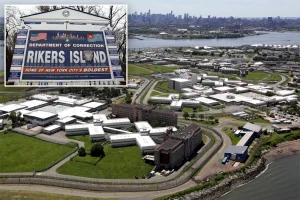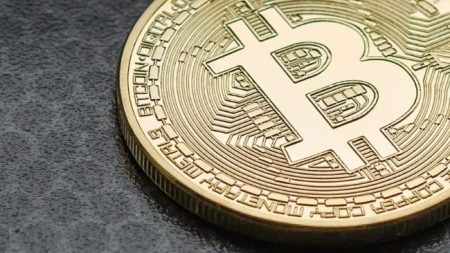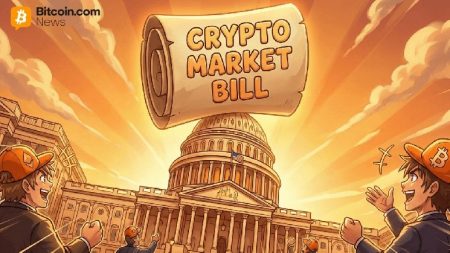Fed’s Barr Warns of Stablecoin Risks as Crypto Sector Races Ahead of Regulation
Federal Reserve Governor Highlights Historical Lessons and Potential Pitfalls in Emerging Stablecoin Infrastructure
WASHINGTON, D.C. — As cryptocurrency companies and Wall Street financial institutions rapidly build stablecoin infrastructure ahead of formal regulations, Federal Reserve Governor Michael Barr issued a stark reminder about the inherent vulnerabilities of digital assets that claim to maintain stable value. Speaking at DC Fintech Week on Thursday, Barr emphasized the historical dangers of private money systems that lack proper safeguards, even as the industry forges ahead in an uncertain regulatory environment.
“Issuing liquid liabilities redeemable at par but backed by assets, even high-quality ones, about which creditors might have questions makes private money vulnerable to run risk,” Barr cautioned to an audience of financial technology and legal experts. His comments come at a pivotal moment as the crypto industry awaits implementation rules for the recently passed Guiding and Establishing National Innovation for U.S. Stablecoins (GENIUS) Act, legislation designed to create a comprehensive regulatory framework for stablecoins in the United States.
Barr, who previously served as the Fed’s vice chair for supervision before stepping down during the Trump administration, has been viewed with skepticism by some in the crypto industry who associate him with the “debanking” trend, where financial regulators allegedly discouraged banks from servicing digital asset companies. Despite recent policy shifts that have seen U.S. regulators adopt a more accommodating stance toward cryptocurrency businesses, Barr’s presence on the seven-member Fed board continues to influence the developing regulatory landscape. His warning reflects ongoing concerns about potential systemic risks posed by stablecoins, digital assets designed to maintain a 1:1 value with fiat currencies like the U.S. dollar.
Lessons from Financial History Point to Stablecoin Vulnerabilities
Drawing parallels to traditional financial instruments, Barr referenced the U.S. experience with money market funds as a cautionary tale. He specifically mentioned how the Reserve Primary Fund “broke the buck” — falling below its promised $1 value per share — during the 2008 global financial crisis, and how similar pressures emerged again during the COVID-19 pandemic. These historical examples underscore his concern about stablecoins, which operate on similar principles but with potentially fewer safeguards.
“Stablecoin issuers traditionally retain profits from investing reserve assets and therefore have a high incentive to maximize the return on their reserve assets by extending the risk spectrum as far out as possible,” Barr explained. “Stretching the boundaries of permissible reserve assets can increase profits in good times but risks a crack in confidence during inevitable bouts of market stress.”
The governor’s observations highlight a fundamental tension in the stablecoin business model: the economic incentive to invest reserves in higher-yielding, potentially riskier assets versus the need to maintain sufficient liquidity and stability to honor redemptions at par value. This tension becomes particularly acute during market downturns when investors may rush to redeem their stablecoins, testing the liquidity and value of the underlying reserve assets.
Industry Response: Circle Acknowledges Regulatory Concerns
Corey Then, vice president and deputy general counsel for global policy at Circle, the issuer of USDC (one of the leading U.S.-based stablecoins), took the stage after Barr and expressed broad agreement with the regulator’s concerns. “For the most part, I agree with everything he is saying,” Then acknowledged. “There’s a lot of work to be done in the rulemaking process. The last thing we want at Circle is a permissive environment.”
This alignment between regulator and industry participant reflects growing recognition of the need for robust safeguards in the stablecoin sector. Circle’s position is particularly significant given its own experience during the 2023 banking crisis, when approximately 8% of its reserves—worth over $3 billion—were held at Silicon Valley Bank when it failed. This exposure temporarily pushed USDC off its dollar peg amid a rush of redemptions, illustrating precisely the kind of run risk Barr described.
The incident with USDC is not isolated. Other high-profile stablecoins have similarly deviated from their pegs, most notably the catastrophic collapse of Terra’s UST in 2022, which wiped out billions in value and sent shockwaves throughout the cryptocurrency ecosystem. These events lend credence to regulators’ concerns and underscore the potential for stablecoin instability to affect broader financial markets.
Regulatory Challenges and the Implementation of GENIUS Act
While the GENIUS Act represents a significant step toward comprehensive stablecoin regulation, Barr highlighted several areas of concern in its implementation. He specifically flagged the inclusion of uninsured deposits as potential reserves for issuers under the legislation, noting they were “a key risk factor during the March 2023 banking stress.” He also expressed reservations about “overnight repo” as a reserve component, suggesting it “could include potentially volatile assets.”
In a particularly striking hypothetical, Barr noted that because Bitcoin has been declared legal tender in El Salvador, an argument could be made under the GENIUS Act that Bitcoin repo might qualify as an eligible reserve asset—a scenario that would introduce substantial volatility into supposedly stable reserves.
The current regulatory environment presents a particular challenge as Tether’s USDT—the world’s largest stablecoin by market capitalization—operates offshore under a reserve approach that would not meet the pending U.S. standards, though the company has indicated plans to enter the U.S. market fully. This creates a complex global landscape where different stablecoins operate under vastly different regulatory requirements and transparency standards.
Concerns About Regulatory Arbitrage and Systemic Risk
A particularly worrying scenario, according to Barr, is the potential for regulatory arbitrage as stablecoin issuers navigate a complex web of oversight. Because issuers may be regulated by different agencies at both federal and state levels, there exists the risk that companies might “shop” for the most permissive regulator despite the GENIUS Act’s intent for substantially similar rules across jurisdictions.
Barr drew a sobering parallel to the 2008 financial crisis, specifically referencing how American International Group’s risky financial products division was overseen by the Office of Thrift Supervision—widely considered a weaker federal regulator—while its other operations fell under various state supervisors. This fragmented oversight allowed significant risks to accumulate undetected, eventually threatening the broader financial system and necessitating a massive government intervention. (The Office of Thrift Supervision was subsequently disbanded.)
“Federal and state regulators need to write a comprehensive set of rules that can fill in important gaps and ensure that there are robust guardrails to protect users of stablecoins and mitigate broader risks to the financial system,” Barr emphasized, underscoring the need for coordinated and comprehensive regulatory approaches.
The Path Forward: Balancing Innovation and Safety
As the stablecoin industry continues to evolve and expand, finding the right balance between enabling financial innovation and ensuring system stability remains a critical challenge. Tether’s CEO has publicly stated the company’s intention to comply with the GENIUS Act to operate in the U.S. market, while Circle maintains its current practices already align with emerging regulatory standards.
The stakes in this regulatory development are significant. Stablecoins serve as a crucial bridge between traditional finance and the cryptocurrency ecosystem, facilitating faster, less expensive cross-border transfers and providing a less volatile digital asset for crypto traders. Their growing integration into payment systems and broader financial applications means that instability in stablecoins could potentially affect not just crypto markets but also aspects of traditional finance.
Barr’s warnings serve as a timely reminder that despite technological innovation, fundamental principles of financial stability—adequate reserves, transparent operations, and robust risk management—remain essential safeguards against the “long and painful history of private money created with insufficient safeguards.” As regulators work to implement the GENIUS Act and establish comprehensive oversight of stablecoins, the industry’s willingness to embrace appropriate regulation may determine whether these digital assets fulfill their promise of enhancing financial inclusion and efficiency without introducing new systemic risks to the global financial system.














